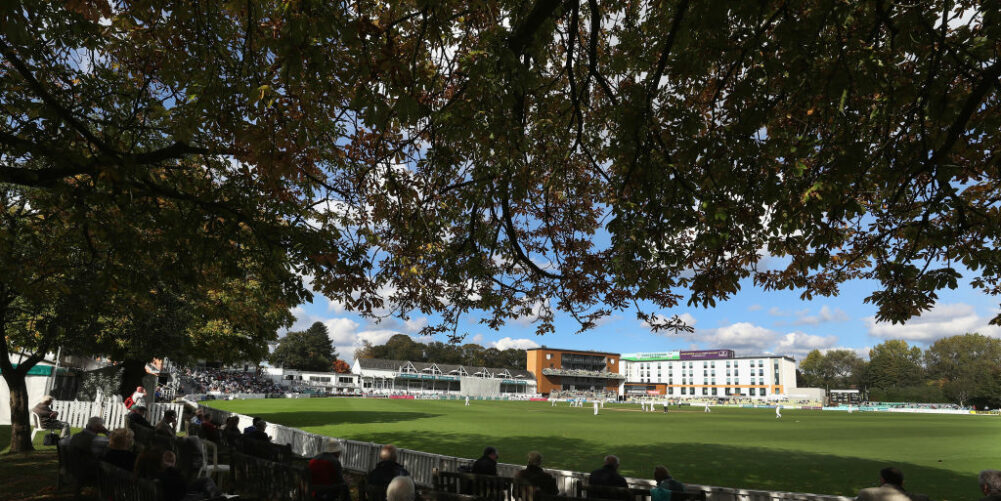By Derek Pringle
For many, the two-divisional County Championship introduced in 2000 has given first-class cricket in England and Wales context and kudos with promotion and relegation often remaining unsettled until the last match of the season. But such suspense has come at a price with a raft of counties now believing two divisions to be a toxic brand harming the long-term interests of England cricket.
Their reasoning is logical and it is strong. Faced with the carrot of promotion or the stick of relegation, most seek the short-term solutions posed by those challenges by signing Kolpak players – good, savvy cricketers usually from South Africa who no longer wish to represent the country in which they were raised.
Nothing wrong or illegal in that you might think, except that there is often no incentive then for counties to invest, improve or even seek out talented young cricketers of their own, a situation that eventually impacts upon England cricket down the line.
According to one seasoned observer of the county game, there are clubs in the second division (no names) who have essentially given up trying to gain promotion from the second division as they neither have the player power nor the resources to mount a sustained challenge. Instead, they bring in Kolpak players on cheaper one-day contracts to try to win a white-ball competition instead, again to the long-term detriment of England Test cricket.
Another beef is that the wealthier clubs based at Test grounds, like Surrey and Lancashire, can buy their way to staying up. Now, clearly, Surrey would argue they are producing talented cricketers of their own like the Curran brothers, but they have certainly been guilty of asset stripping other clubs, like Worcestershire and Durham, in the recent past. Nothing disincentives a club to invest in young players if the bigger clubs lie ready to poach them.
Such voracity, the smaller clubs would argue, makes it all about money, and they simply don’t have enough to compete – hence the popularity and eager acceptance of the £1.3 million inducement offered to them by the ECB to approve the new T20 England Premier League. It is not much, though, and for many it will be no more than a sticking plaster at best.
So how best to rectify the obvious ills of a two-division system? Well, a recent report claimed that six county clubs had recently lobbied Tom Harrison, the chief executive of the England and Wales Cricket Board, about adopting a three-conference system of equal standing, loosely based on the NFL, with play-offs to decide the winner and other major placings.
This is not original. One of Lord MacLaurin’s early plans as chairman of the ECB was to suggest something similar under a directive called ‘Raising the Standard’ in 1997. It looked and sounded complicated, though, and was essentially laughed out of St John’s Wood. However, the idea was resurrected in 2008 when the Indian Premier League began to goad the ECB into the need for an all-singing, all-dancing T20 competition that bypassed mere county teams – a conference system freeing up the time needed in the middle of the season to accommodate the new T20 comp.

There has been little detail as to how this latest conference system might work, though one might rightly assume, with 18 first-class teams, that it would be three conferences of six teams each. Which team goes into which conference, though, or how their designation might be chosen – geographically, alphabetically, population size – is not yet clear.
Assuming each side would play the other conference members home and away, that is 10 games before play-offs, a reduction from the current County Championship which offers 14 matches to all teams across both divisions, inclement weather notwithstanding.
Any reduction in matches has never played well with traditionalists.
For those counties who still rely on membership subscriptions, a full and fair County Championship is still the main draw card.
In any case, fewer matches makes you more vulnerable to the vagaries of the weather. With the Championship already pushed to the margins of the season, two rained-off matches could ruin your chances of achieving anything significant in the current system, let alone a conference one comprising fewer days cricket.
For many, any reduction in matches is yet further proof of another tweak, whether by accident or design, undermining the county game, something that has gone on since the introduction of central contracts in 2000. It was that, they argue, which limited the club’s best players to occasional guest appearances, the further erosion of which they fear once again, after the new T20 franchise competition begins in two years’ time.
Then there is four-day cricket, which some say has removed variety from the game. According to Essex, three-day cricket suited their membership and it allowed them to play festival weeks at out-grounds like Colchester and Southend, two venues that brought spinners into play. Yet, you cannot have it both ways. Three-day cricket was not great at helping England to produce savvy Test players, which is of course the argument against two divisions now, albeit from a different first principle.
While we are picking apart the current Championship, it is a pretty barmy state of affairs that with two out of eight teams set for the chop, 25 per cent of the top division will get relegated.
That is too much, and while Middlesex were mostly arbiters of their own demise last season, one cannot help but feel some sympathy towards them as they went from champs to chumps in the space of a year. Three conferences would avoid that, but if it then reduces the amount of cricket in doing so you have to wonder about the point of it all.












